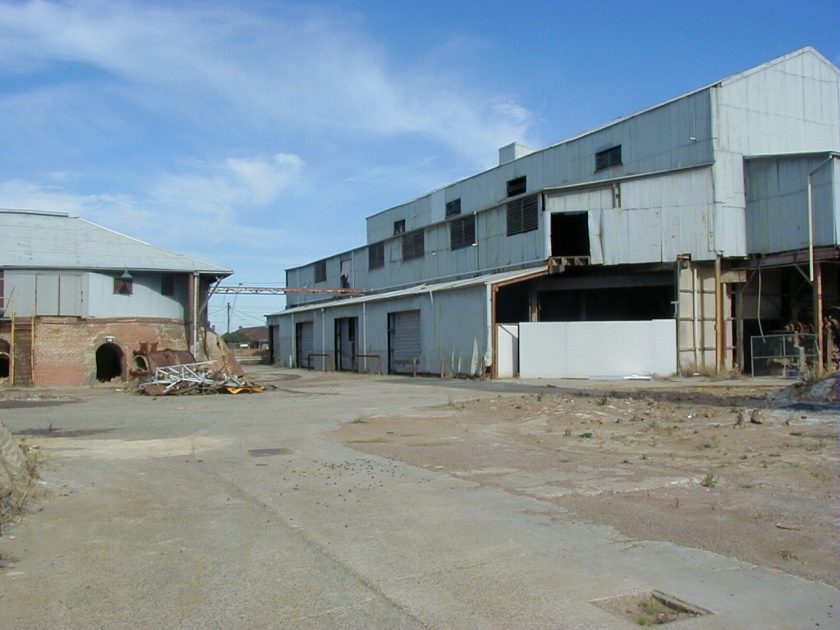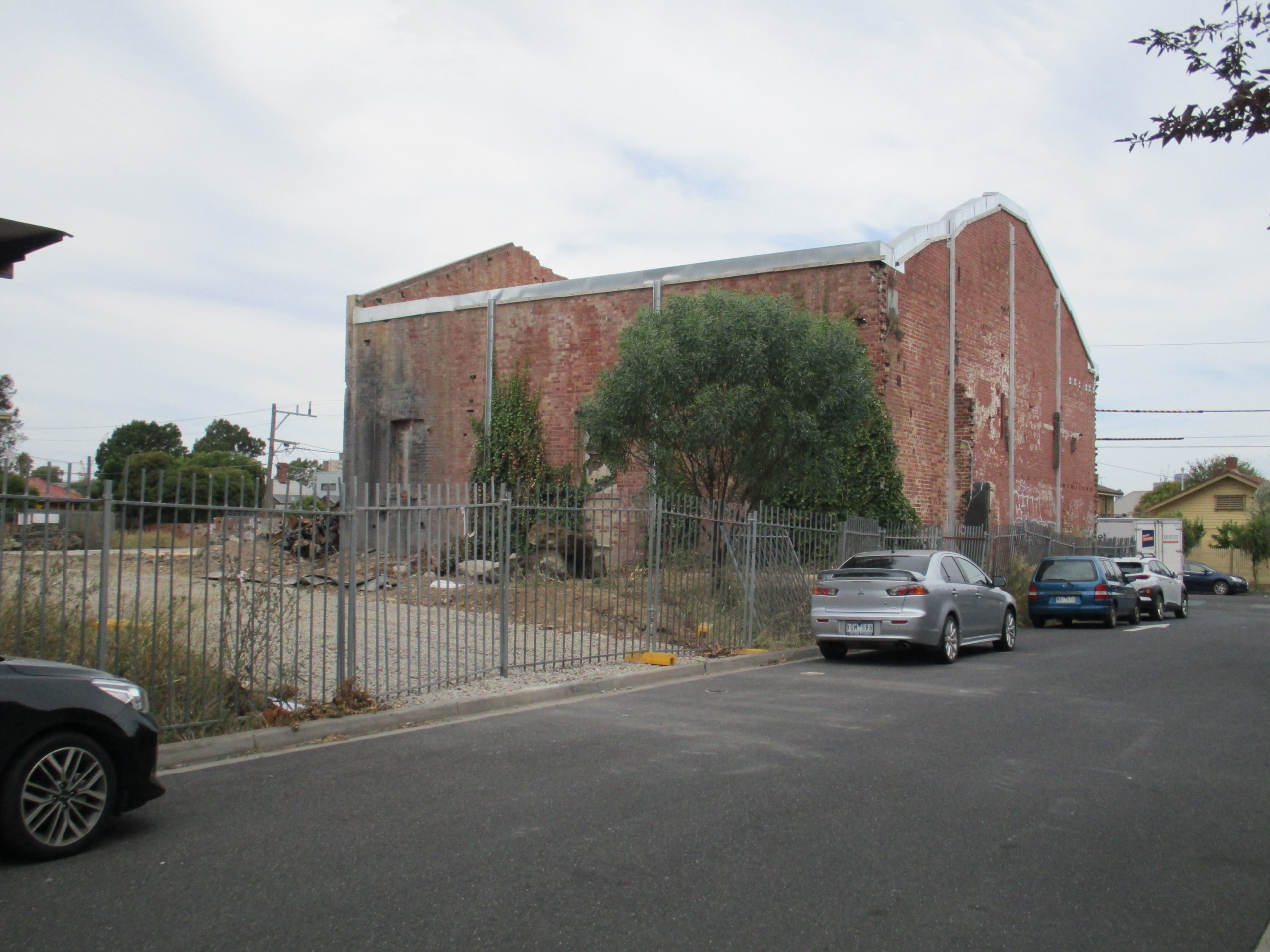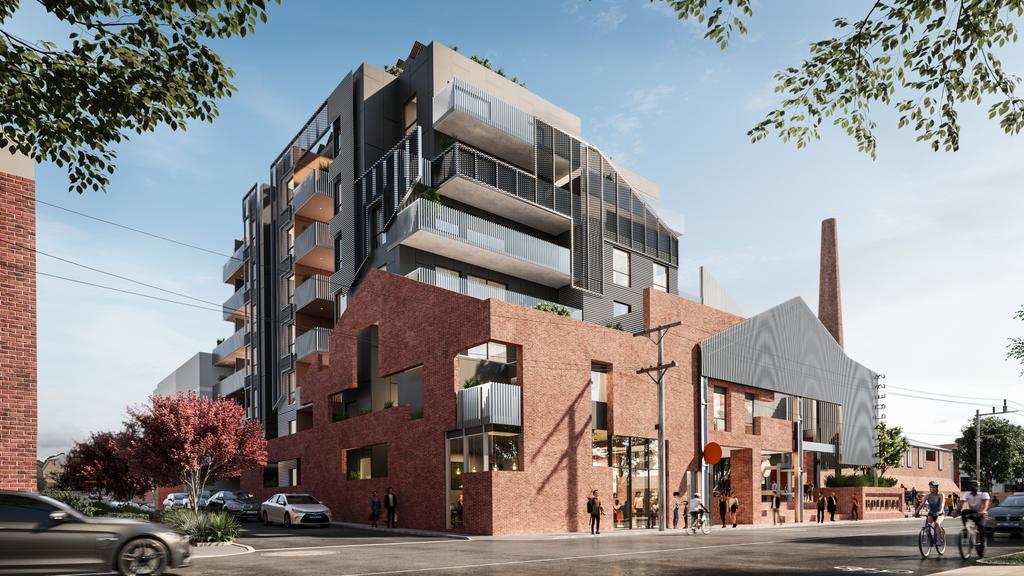March 2022
In a classic example of ‘demolition by neglect’, two important heritage buildings on the Hoffman’s Brickworks site in Brunswick have been lost because the developer allowed them to decay to the point where they became unsafe.
The Hoffman’s Brickworks is an important part of Victoria’s industrial heritage and was the source of many of the bricks used to construct Victorian buildings in the nineteenth and twentieth centuries. The company pioneered the industrialization of brick making in Australia by its introduction of Hoffman kilns, in conjunction with steam brick making machinery. It was the largest and most technologically advanced brickworks in Melbourne during the land boom of the 1880s, and maintained a leading position in the industry during the first half of the twentieth century. In the early twentieth century it also became the largest pottery in Victoria, producing building, sanitary and domestic products, including the decorated Melrose ware. The clay and brick industry was elemental in the development of Brunswick as a suburb, and the Hoffman works, with its landmark chimney stacks, are all that remains of this industry. The site has been on the Victorian Heritage Register since 1989.
Following the end of brick-making operations in 1993 and the sale of the site in 1996, a Conservation Management Plan (CMP) was drawn up, which provided for the retention of the historic buildings and machinery. While the Hoffman’s company had been quite progressive in its early days and employed the latest technology, in its latter years it became quite conservative and retained its original machinery. The result was that when it closed in 1993, the site was an intact working example of a nineteenth century industrial brickworks.
Under the CMP, the owner/developer was granted permission to demolish portions of the brickworks for apartments in exchange for preserving the most historic parts and creating a museum or interpretive centre on the site. The Moreland Council made a $400,000 grant available to assist the developer in fulfilling these conditions. In 2003, the Moreland Council and the owner/developer entered into an agreement whereby the subdivision of the brickworks precinct was allowed in exchange for the developer retaining and conserving the heritage buildings in the development.
Subsequently, and notwithstanding these agreements, the developer proceeded to demolish Kiln 1 in 2002, and in 2008 converted Kilns 2 and 3 into apartments and demolished the Gatehouse. Heritage Victoria and Moreland Council accepted this reluctantly, on the understanding that profits from the resulting new buildings would be used to retain and restore the remaining heritage buildings.
These were the Brick Pressing Shed (Building 5) and the adjacent former Engine House (Building 6). These buildings, and their associated machinery were assessed in the CMP as of primary significance as they were the only original, unaltered buildings remaining on the site.
The developer, Sungrove Corporation Pty Ltd, failed to carry out this restoration and indeed failed to secure and maintain the buildings. As a result, a fire damaged the roof cladding and structure of the Brick Pressing Shed on 24 March 2018 and the roof of the former Engine House collapsed on 12 June 2020.

Kiln 3 (left) before it was converted to apartments, and the Brick Pressing Shed (right) before it was damaged by fire and subsequently demolished.
Sungrove then proposed to demolish the Brick Pressing Shed and replace it with a kind of replica building in which the machinery would be displayed as an interpretation centre. The justification given for the demolition was that the shed was now in a dangerous state, and that the soil in which it stood was contaminated and could not be removed without first removing the building. Heritage Victoria reluctantly gave permission for this, and in December 2021-January 2022 the historic Brick Pressing Shed was demolished. Heritage machinery was first removed from inside and temporarily stored so that it could be returned as part of a future interpretive centre on the site. The developer then asked Heritage Victoria for permission to demolish the remaining heritage building on the site, the Engine House, for reasons similar to those which led to demolition of the Brick Pressing Shed. On 25 January 2022, Heritage Victoria announced that it had reluctantly issued a permit to allow the developer to knock down the remaining walls of the former Engine House, citing soil contamination and the precarious state of the walls.

The Engine House building before it was demolished.
Sungrove’s plan is to build a new multi-storey residential and commercial building on the footprint of these two demolished heritage buildings. It has succeeded in obtaining a ‘greenfields’ site on which to do this by failing to properly maintain and conserve the Brick Pressing Shed and Engine House over the last twenty-plus years. Its serial non-compliance with agreed conditions and failure to meet its obligations has enabled Sungrove to construct its commercially profitable new building unobstructed by any heritage buildings of value to the community.

Image credit: Glenvill Developers.
What the developer in 2020 proposed to build on the site of the two demolished heritage buildings. The shape of the street frontages of the new building was supposed to reflect those of the two buildings it replaced. This application was withdrawn but Sungrove is expected to submit a similar proposal shortly.
To read the submission made by RHSV to Heritage Victoria in November 2020 click here.

 239 A'Beckett Street Melbourne, Victoria, 3000
239 A'Beckett Street Melbourne, Victoria, 3000  03 9326 9288
03 9326 9288  office@historyvictoria.org.au
office@historyvictoria.org.au  Office & Library: Weekdays 9am-5pm
Office & Library: Weekdays 9am-5pm

